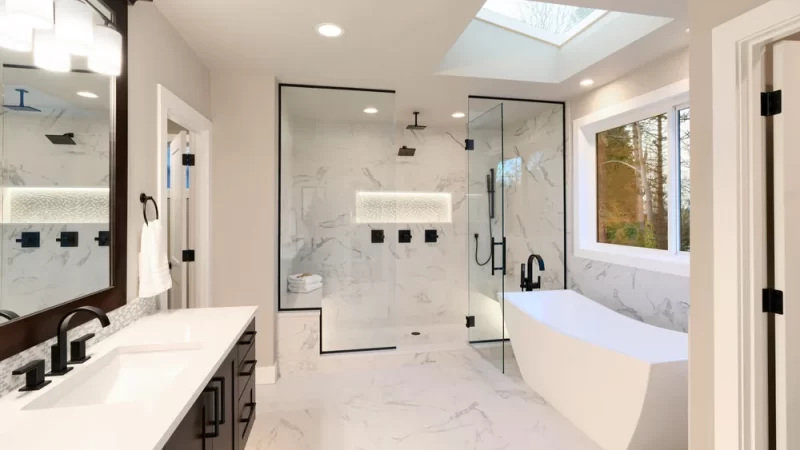The Latest Plumbing Technology and Innovations

In recent years, many new plumbing technologies have been introduced. These include touchless fixtures and smart appliances that promote sustainability and accessibility.
In addition, modern tools can make plumbing jobs much easier and less invasive. Examples include video cameras for locating sewer lines, non-intrusive trenchless technology, and GPS fleet tracking devices to help dispatchers locate service vehicles.
Video Cameras
Many plumbing problems are not visible, so it can be hard to know what’s causing the problem. This is especially true when it comes to leaks in pipes that are underground. But thanks to new technology, plumbers can now use video cameras to see what’s going on inside of your pipes.
This type of camera allows plumbers to see what is happening in your pipes, which can help them diagnose and fix the problem faster. It can also save you money by allowing them to avoid unnecessary repairs.
The cameras can be used to inspect sewer lines and other pipes. They can help identify the type of pipe material, and they can also show any damage or cracks that may be present. In addition, the cameras can help plumbers locate the source of a blockage and determine the best way to remove it. It can also help them save time by avoiding unnecessary digging.
Leak Detection Systems
Leak detection systems monitor water flow by detecting the pattern of how your fixtures use water. When they detect a leak, they shut off the flow to prevent costly damage and protect your building from dangerous mold and mildew.
These systems utilize acoustic technology to listen for high frequency sounds from pipes under pressure like whooshes, hisses, and gurgles. They also monitor the sound of water flowing through a pipe to determine its velocity.
Some leak detectors use tracer gasses, pressurizing nontoxic and insoluble gases like ammonia, halogens, or helium into the system to identify where leaks are located. These gases are lighter than air and will vaporize in the area around leaks, then be detected by man-operated detectors. Different types of hardware-based and software-based methods have been used in the field for leak detection and monitoring. They all fall under the categories of identifying, differentiating, and localizing-pinpointing. (Cataldo et al., 2014). The two broad classes of leak detection are static and dynamic.
Smart Appliances
Plumbing technology continues to advance with the development of smart appliances that offer convenience and control. From energy-efficient fixtures to advanced leak detection systems, these new technologies can save consumers time, money and energy while also reducing their risk of water damage.
For example, modern piping is made of more resilient materials that are resistant to freeze-off, which can help protect against water damage. Other innovations include flexible tubing that can seal leaks in water lines – even underwater!
Consumers are demanding more from even the most basic household plumbing fixtures. For example, many toilets now come equipped with smart features that allow users to customize their shower experience. This can include adjusting the temperature, steam and cleansing settings with voice activation. Other smart toilet features include heated seats, air drying and motion-activated night lights to reduce the risk of fumbling in the dark. Smart showers are another popular choice that offer a range of benefits including comfort, hygiene and water conservation.
Smart Home Systems
Many homeowners are familiar with smart home systems that allow them to control appliances and other features in their homes from a smartphone or tablet. However, not as many are aware of the plumbing systems and devices that can be integrated into a home’s smart technology to deliver new possibilities for protection against leaks and water conservation at home.
Leak detection systems that are built into a smart home hub monitor the plumbing system and identify leaks. They alert users and shut off a water supply to prevent escaping water from causing damage.
Having a smart home system that can monitor a water heater helps Cincinnati area homeowners keep tabs on one of the largest energy consumers in their homes. They can see usage data and adjust their habits to reduce energy costs while also protecting against energy waste and leaks in the process. Get more information about the possibilities for smart upgrades to a household plumbing system from the licensed plumbers at Thomas & Galbraith today.







